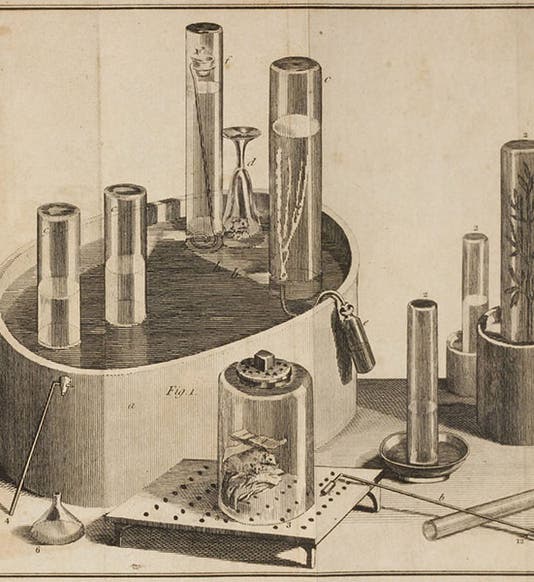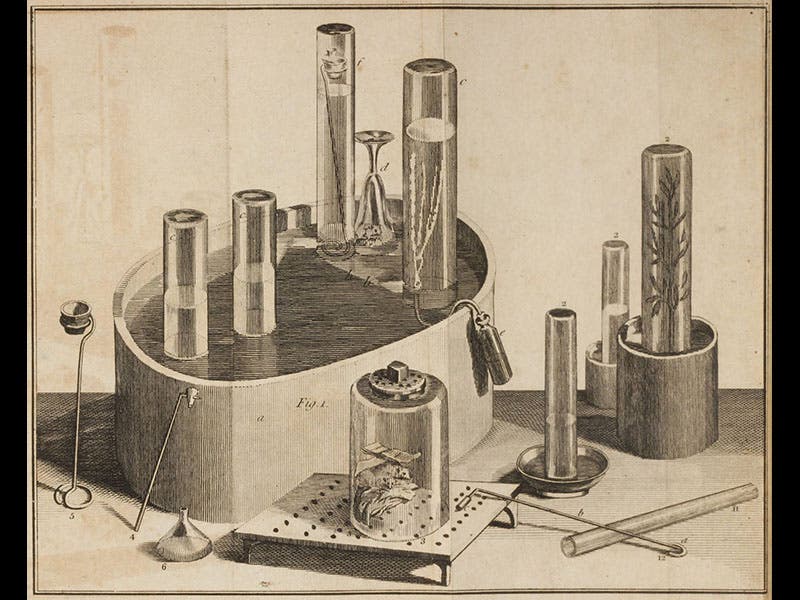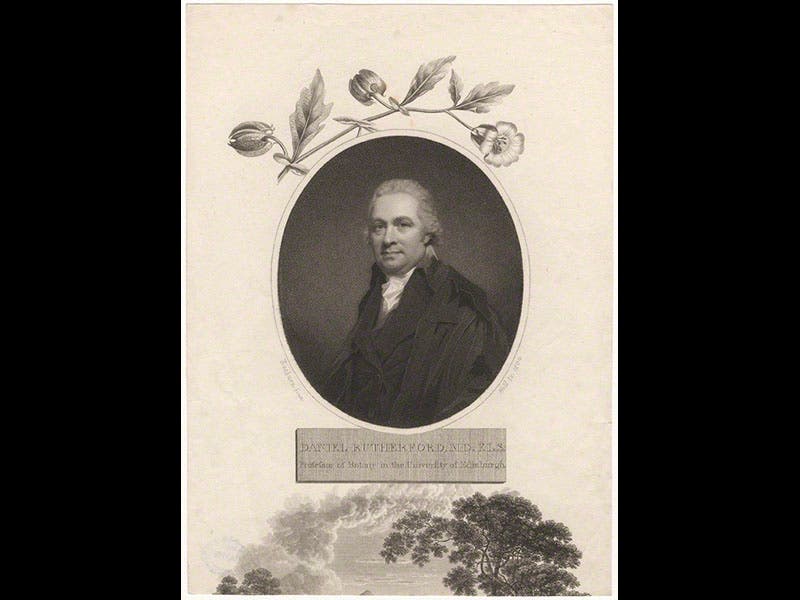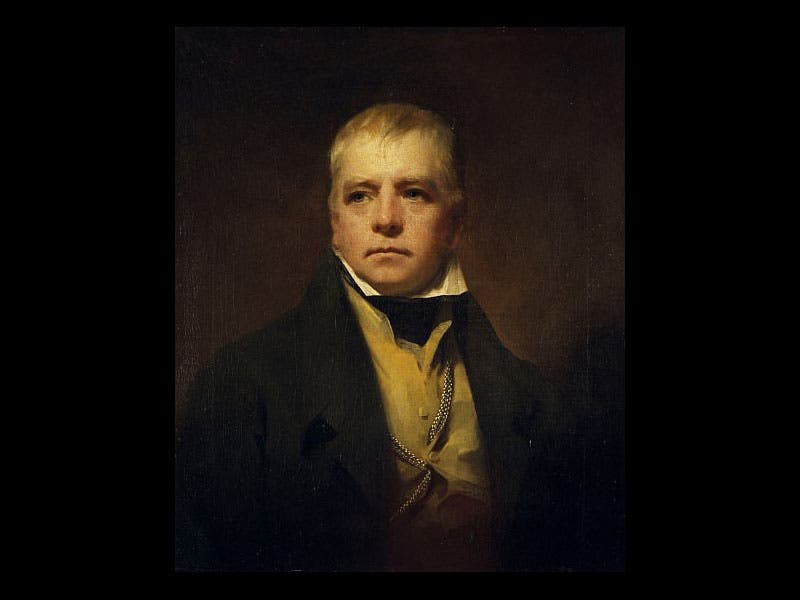Scientist of the Day - Daniel Rutherford
Daniel Rutherford, a Scottish physician, was born Nov. 3, 1749. Rutherford earned his doctorate at Edinburgh University in 1772 for a project suggested to him by his advisor, the great chemist Joseph Black. Black had discovered "fixed air" (carbon dioxide) in 1756, but he found reason to suspect that when you removed the "good" air from a vessel (oxygen had not yet been discovered) and then scrubbed out the "fixed air", there was still some kind of air left. Rutherford investigated further. He removed all the good air from a closed container (first by using a mouse, then a candle, and finally by burning phosphorus). The air remaining was passed through a solution, removing all the carbon dioxide. What was left was an air that would not support combustion, nor could it be fixed in any substance. Since it was harmful to life, in the sense that neither plant nor animal could live in it, Rutherford called it "mephitic air" (mephitic means poisonous) and submitted the discovery for his doctoral thesis in 1772. Lavoisier would later refer to the gas as “azote”. We call it nitrogen. We now know that another Englishman, Henry Cavendish, and a Swede, Carl Scheele, discovered nitrogen independently at about the same time, but they did not publish the discovery, and Rutherford did, so Rutherford generally gets the credit. It was his first and last contribution to chemistry, as he turned to a successful career in academic botany and medicine. Rutherford died in 1819, the very year the novel Ivanhoe was published by his much-more famous nephew, Sir Walter Scott.
Rutherford’s portrait was painted by the great Scottish portrait painter, Sir Henry Raeburn, but only engravings of the portrait survive; the one above is in the National Portrait Gallery, London (second image). Raeburn also did an oil portrait of Scott, which is in the National Museums of Scotland (third image). Rutherford did not illustrate his laboratory equipment, so we show a diagram of a set of “pneumatic troughs” (apparatus for capturing gases over water), from a treatise on air (1777) by Joseph Priestley (first image).
Dr. William B. Ashworth, Jr., Consultant for the History of Science, Linda Hall Library and Associate Professor, Department of History, University of Missouri-Kansas City. Comments or corrections are welcome; please direct to ashworthw@umkc.edu.









